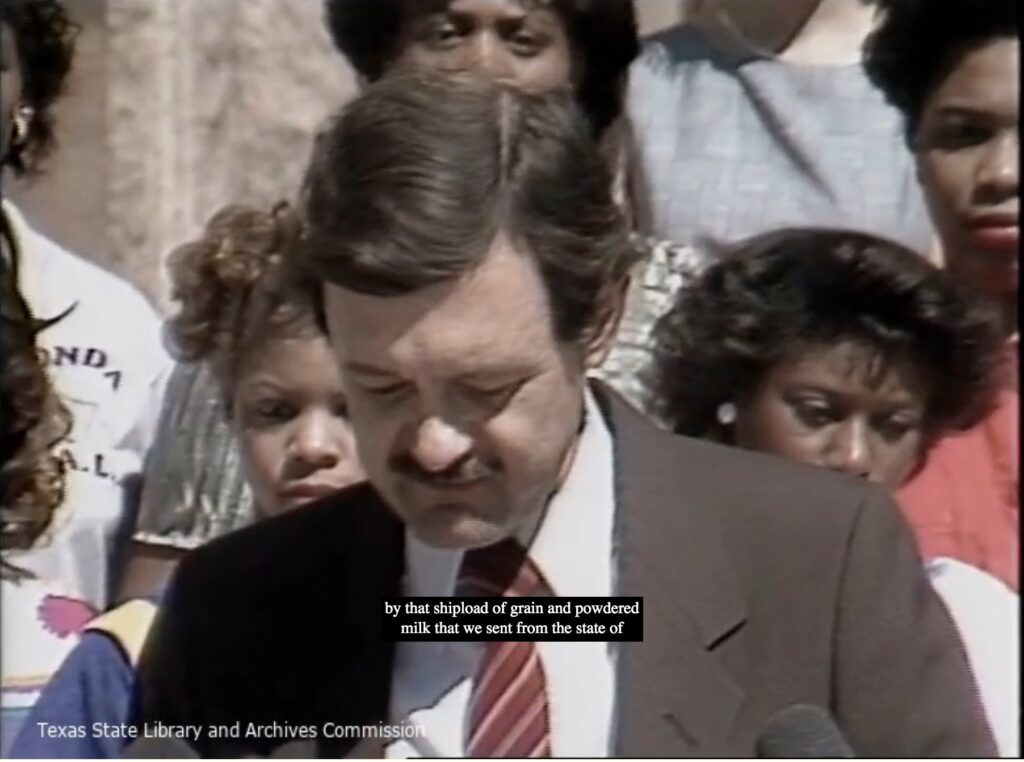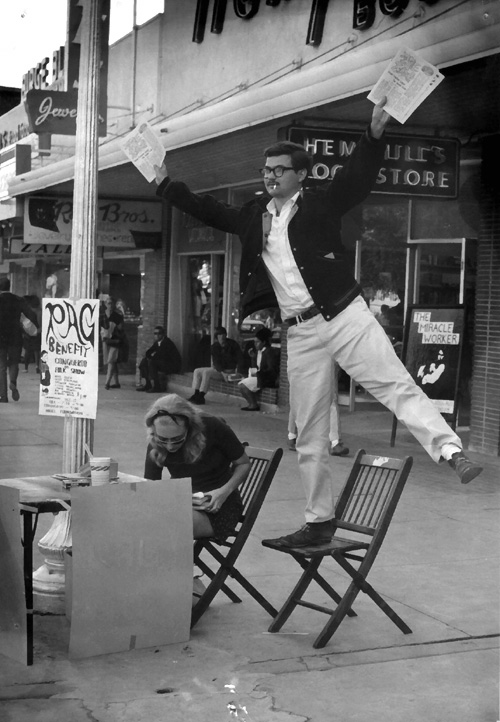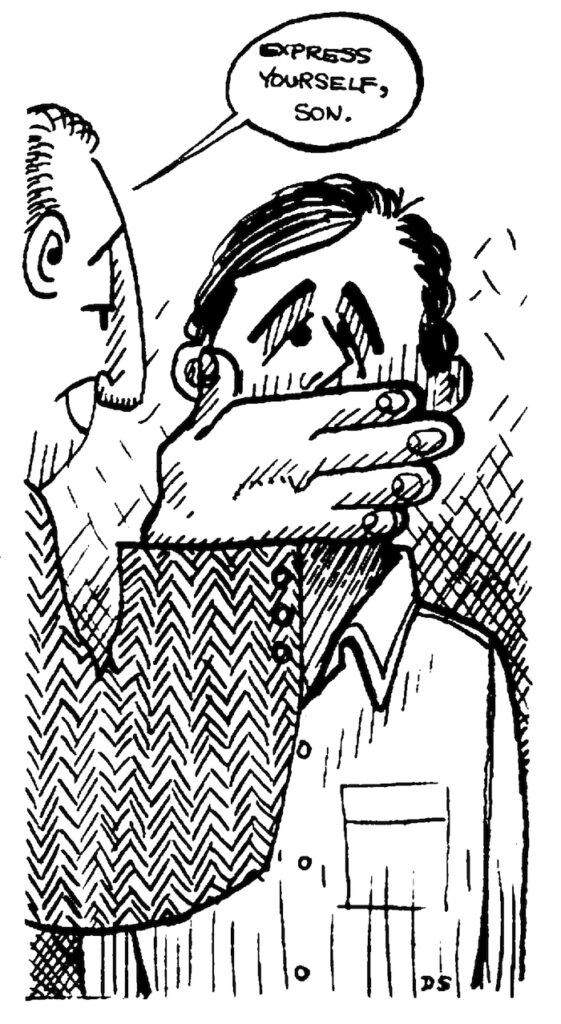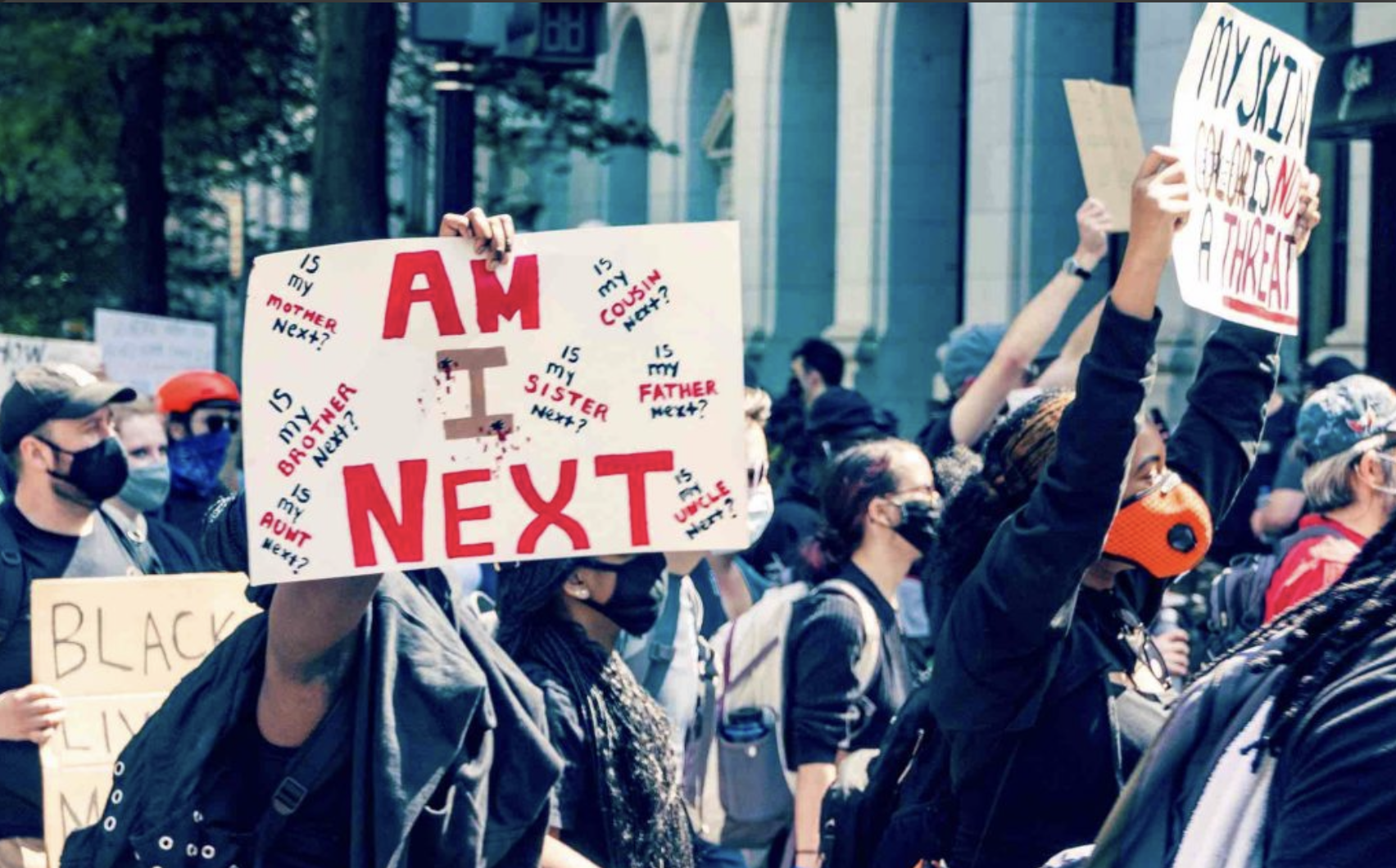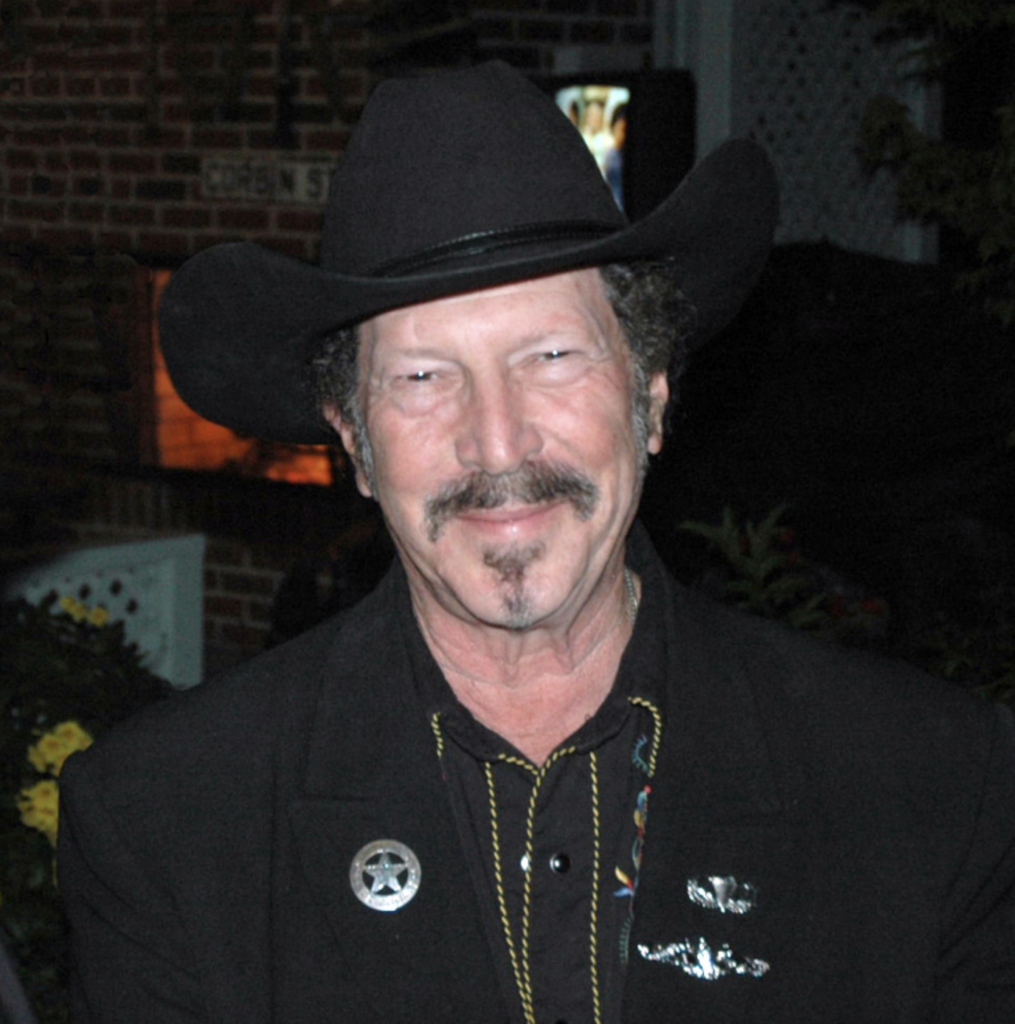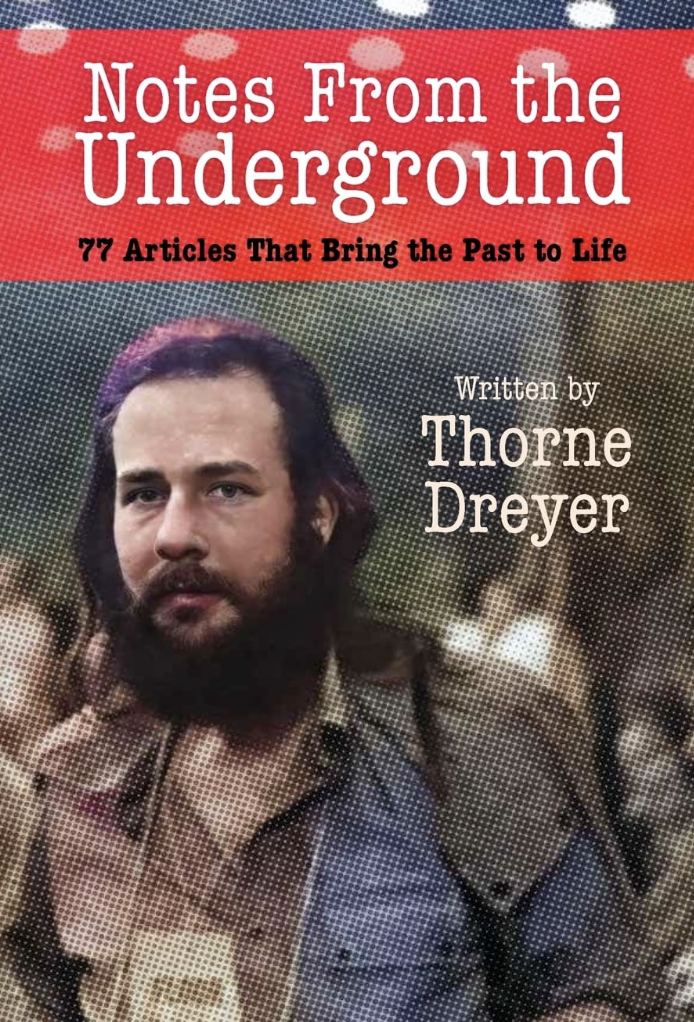
A Review of Thorne Dreyer’s new book, ‘Notes From the Underground’
By Robert Cottrell / The Rag Blog / April 9, 2025
Notes From the Underground: 77 Articles That Bring the Past to Life, the second collection of Thorne Dreyer’s lifework, includes essays, musings, and interviews, collectively cementing his standing as a foremost figure in the history of American journalism and dissent.
Simply put, his latest contribution is a terrific, vitally important offering, indeed, an instant classic. Significantly, as this volume — coming on the heels of his well-received Making Waves: The Rag Radio Interviews (2022) — movingly displays, its author-editor-compiler has remained at the cutting edge of both alternative journalism, the counterculture, and American radicalism for six decades. Large portions of his history, the Movement of which he was such an integral part, and many of its finest qualities, suffuse this panorama of commitment, activism, triumphs, and tribulations.
Smartly segmented into temporal and thematic sections, the book draws from Dreyer’s reminiscences, the people’s uprisings of the Long 1960s and the extended backlash that resulted, cultural happenings particularly meaningful to Dreyer, interviews conducted during the Movement’s heyday and aftermath, poignant memories of friends, and a tale of a stint at the Harris County Jail. Interspersed throughout are photographs of activists, taken both earlier and later, as well as drawings by some of the era’s finest illustrators.
Even the title of Dreyer’s book sparkles, with the reader able to reflect on the underground press and days gone by or through a conjuring up of Dostoevsky’s novella, a favorite from my late, great undergrad days.
As Dreyer notes in his brief introduction, “Notes From the Underground is an effort of love,” the byproduct of painstaking archival work, in the widest sense, on his part. It naturally includes several selections from the two legendary underground newspapers he helped to found: The Rag and Space City! The first, of course, appeared in Austin, Texas; the second, in Houston, where Dreyer was raised. But also cropping up are other seminal writings from Liberation News Service, that alternative press syndicate he helped shepherd, and various publications.
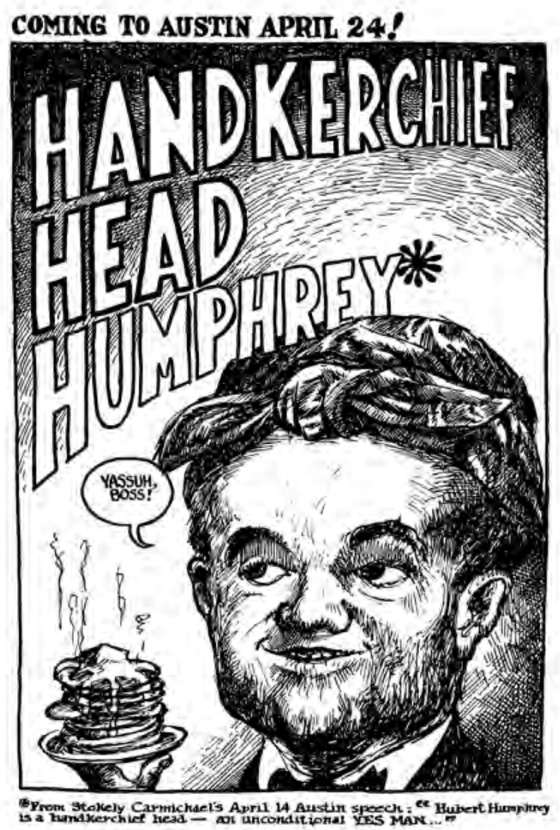
Hankerchief Head Humphrey. Austin poster.
The initial section of Notes from the Underground, “Years of Protest and Upheaval (or Taking to the Streets),” opens with “All-Woman Sit-In at SS Office,” which appeared in one of the very first issues of The Rag during the fall of 1966. It displays Dreyer’s characteristic dry wit laced with sharp mini-biographies of villains and heroes — Alice Embree fittingly was there — as well as glimpses into the fledging anti-draft and feminist movements. Next up is a scathing look at Secretary of State Dean Rusk’s visit to the University of Texas, “Dean of War: Where’s Rusk at?” and the repression accompanying it. Dreyer goes on to explore the student movement during “the Season of the Witch” as U.S. involvement in the Vietnam War continued to escalate. He examines the assault in Houston by Marines on antiwar demonstrators — among them SNCC’s Lee Otis Johnson — to the delight of John Birch Society members, some of whom were soldiers or policemen. Dreyer himself was among those assaulted by off-duty Marines.
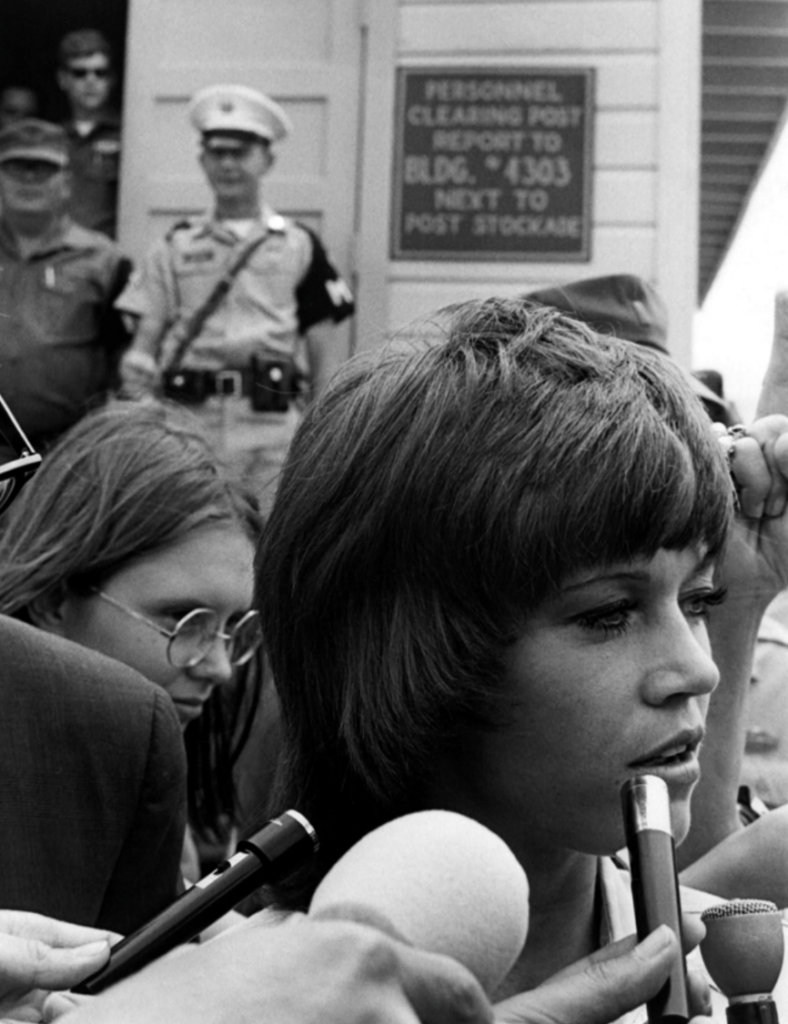
Jane Fonda speaks at Ft. Hood. Behind her is Space City!‘s Victoria Smith. Photo by Thorne Dreyer.
Maintaining his dissection of the Movement, Dreyer next presents “Nightriders and the New Politics.” There can be found “The Battle for People’s Park,” which played out in Berkeley, California, the further maltreatment of Lee Otis Johnson, and the “Government Campaign Against the Black Panther Party.” But also situated in this section are stories involving the G.I movement at Fort Hood, where Jane Fonda spoke, transcripts of a lengthy interview with the actress-activist, and a visit by radical attorney William Kunstler. Also present is an account of the Ku Klux Klan’s assault on Space City! and “Houston’s Civil War,” involving right-wing terrorism there.
On a lighter note, albeit not altogether riddled in levity, “Lyndon’s Bar-B-Q” recounts spirited demonstrators decrying the recently completed “Tower of Lyndon—the LBJ Library.” Like Space City! Houston’s Pacifica radio, another article recalls, had to contend with terrorism, in that case a pair of bombings. This section nears a close with Jerry Rubin’s explaining his support for the McGovern campaign in 1972, the strange reality that 1968 street demonstrators in Chicago were in Miami four years later as delegates at the DNC; considering Richard Nixon “a very dangerous man,” Dreyer himself admits, “I’m supporting George McGovern” despite recognizing, “He’s no Messiah” and writing, “I never could go for the Kennedys).” Dreyer includes a later selection, “The Spies of Texas: Newfound Files Detail How UT-Austin Police Tracked the Lives of Sixties Dissidents,” from the Texas Observer, and an earlier review of Laurence Leamer’s fine book on the underground press.
Largely leaping ahead, section three, “Echos of the Resistance,” begins with a critical look at the unstinting backing by Texas Senator John “Corn Dog” Cornyn for the horrific Iraq War, then bounds to a music-flavored protest in Austin against that conflagration. The next story involves a resurgent, supposedly “kinder gentler” Klan, which leads back to a fuller telling of the KKK’s assault on Space City! Then, Dreyer discusses former Austinite turned Black Liberation Army supporter Marilyn Buck, her award-winning poetry, her “wonderful vision” of “justice and human rights and women’s equality, and her release from lengthy incarceration shortly followed by her death from uterine sarcoma. He highlights Vicki Welch Ayo’s Boys from Houston and the “unlikely” unfolding of the city, or at least portions of it, such as Montrose, as a “Sixties hotbed.”
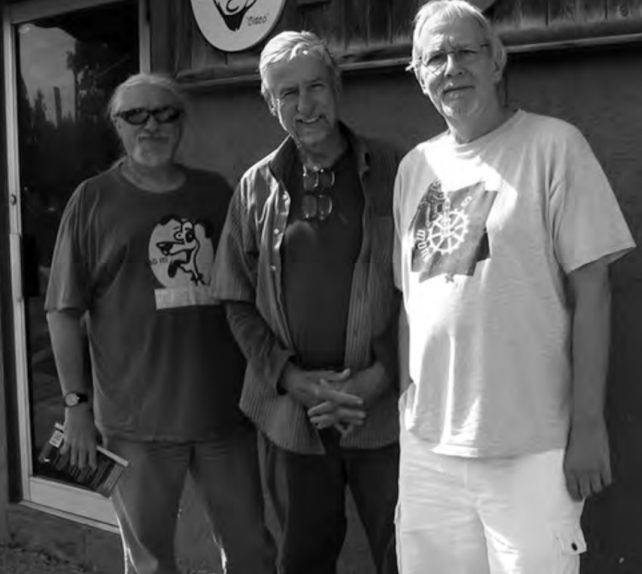
Tom Hayden, center, in Austin with Jim Retherford, left, and Dreyer. Photo by Alice Embree.
This eclectic section also singles out the unhappy demolition of an historic Austin house, before turning to an interview with former SDS leader Tom Hayden as the fiftieth anniversary of his famed Port Huron Statement occurred. Perhaps appropriately, next up is a report of Austin’s participation in the massive protests that followed Donald Trump’s first inauguration. Included too are a review of Dorothy Dickie’s documentary, Under the Ground: The Story of Liberation News Service, and an account of its receipt of the National Educational Telecommunications Award. “Echos of the Resistance” nears a close with an essay, first published in the Houston Chronicle, on the Klan’s attack on Space City! Dreyer reproduces his stirring introduction to Making Waves, providing more of his personal story. That is followed by “Whatever Happened to the New Generation?” which cropped up in Texas Monthly during the mid-70s, the article refuting the notion of young activists having discarded their radical ideals.
Section four, “Special Reporting,” has five intriguing essays, starting with a look at a Teen-Age Fair turning into “Pop Expo” in Houston. “Montrose Lives!” delves into “the Strangest Neighborhood East of the Pecos,” where bohemians, gays, artists, and activists flourished. That selection, co-authored with Al Reinert, first appeared in Texas Monthly in April 1973. Dreyer pairs it with “The Mad Mix: Montrose, the Heart of Houston,” written thirty-seven years later, when a “zoning-phobic mentality” was ushering in “townhouses-from-Hell.” “God Goes to the Astrodome,” another early Texas Monthly feature, presents Guru Maharaj Ji and his Divine Light Mission holding court at the baseball stadium. Somehow, “Pitfalls of a Landfill: Oh, Garbage!” aptly follows, with its dissection of Houston’s solid waste conundrum.
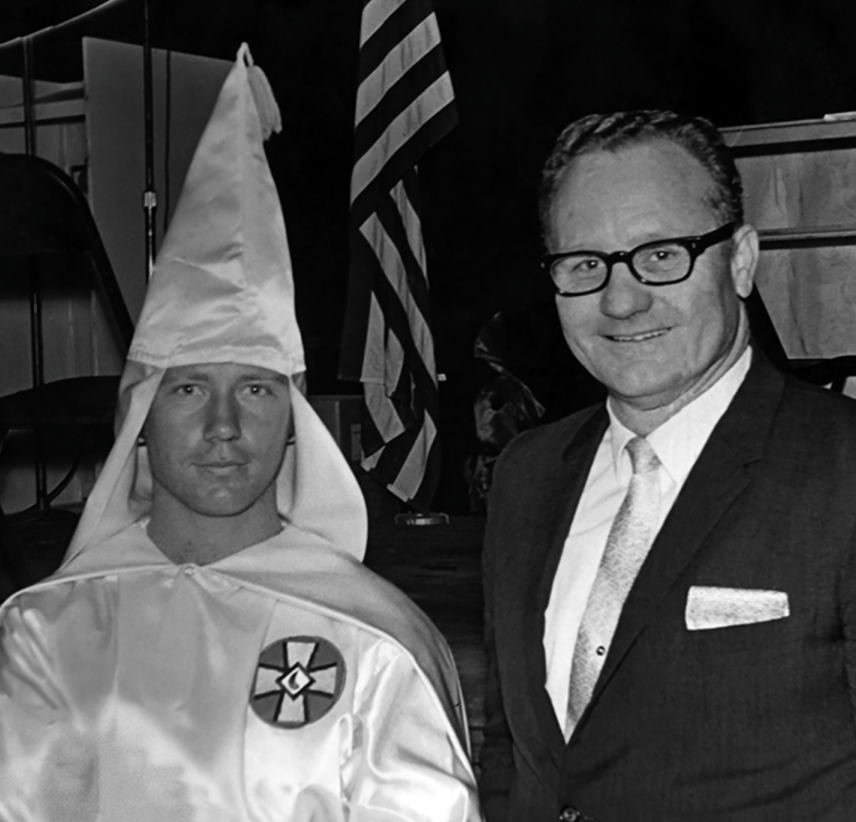
Klansman Mike Lowe attempted to infiltrate the Space City! staff. Photo by Cam Duncan.
Hardly surprisingly, the next section, “Progressive Voices,” is especially strong, as Dreyer largely culls from the legion of interviews he has conducted in his role as first, an underground newspaper editor, and then host of Rag Radio. Reviews of Z, the Costa-Gavras epic, and a Cecil Pickett production of The Resistible Rise of Arturo Ui, conjuring the sensibility “It can happen here,” are included. Interviewees range widely, in keeping with Dreyer’s disparate interests. They include folk singer Judy Collins, musician-author-comedian Kinky Friedman, activists Carl Davidson, Robin Rather, Judy Gumbo Albert, Nancy Kurshan, Todd Gitlin, Bill Ayers, Bernardine Dohrn, and David Meggeysey. Among the other guests making an appearance here are former Texas Agriculture Commissioner-populist Jim Hightower, crusading sportswriter Dave Zirin, political economist Gar Alperovitz, broadcaster Dan Rather, musicians Bill Kirchen and David Amram, “free-form radio legend Bob Fass,” actress Cindy Pickett, and an in-depth interview with Senator Bernie Sanders right before he announced his run for president.

Kinky Friedman is interviewed twice in the book.
Section six, “Remembrances,” allows Dreyer to reflect on past experiences and departed friends in elegant fashion. Stoney Burns was the too frequently harassed editor of the underground newspaper, Dallas Notes, which “decried war, intolerance and hypocrisy with a playful aggression and a cutting edge.” Dr. Stephen R. Keister, philosopher-reformer-universal health care proponent, contributed to The Rag Blog, worrying his nation was “descending into quasi-feudalism and subservience of the many to the few.”
Jack A. Smith, a writer and editor for The Guardian and an early advocate of radical pacifism, was, according to Dreyer, “one of the most important figures in progressive journalism in the 20th century.” The descriptions of Burns, Keister, and Smith fit Dreyer, too. Texas film and theater critic-actor-director-producer-writer Gary Chason assisted both underground newspapers and Hollywood blockbusters. Houston activist Daniel Jay Schacht, who ironically helped to legitimize guerrilla theater, served as a photographer for The Rag and co-wrote a column for Space City! Maggie Dreyer, Thorne’s mother, was a leading Houston abstract expressionist “painter, muralist, mosaic artist, educator, gallery owner, and political activist,” whose gallery was shot up by the Klan.
“And a Parting Shot” relates time spent at the Harris County Jail.
Reading or rereading, in many instances, the pieces in Dreyer’s latest tome leads the historian in me to recall other scribes who have graced the realm of journalism in the United States, often questioning, probing, challenging seeming verities and standard analyses. This is more relevant than ever, perhaps, given the inanities coursing through American governmental and corporate instrumentalities, whether in Washington, D.C., Austin, or too many other stations across the country.
All of these compel me to pair Dreyer with other iconoclastic members of the Fourth Estate, including Upton Sinclair, John Reed, Dwight Macdonald, and Izzy Stone. All suffered, at various points, ridicule, abuse, ignominy, including firings, blacklists, or imprisonments. Dreyer, too, has paid a price at various moments as did too many of his contemporaries, whether engaged in journalism or not, although that, of course, is true of all generations. Some who remained committed to the cause, to fighting the good fight in their own fashion, got left behind, became irreparably damaged, or lost their way. Others managed to come back, carrying bittersweet memories, as can be seen in Notes from the Underground.
[An occasional interviewee on Rag Radio and contributor to The Rag Blog, Robert C. “Bob” Cottrell is the author of several books on radicalism. These include biographies on the maverick journalist I.F. Stone and ACLU founder Roger Nash Baldwin, an examination of the counterculture, a look at 1968, and other works on both American and global radicalism. His All-American Rebels: The American Left from the Wobblies to Today recently appeared in paperback. Cottrell is readying to teach an OLLI class, “American Radicalism,” and presently crafting his sixth baseball book.]


